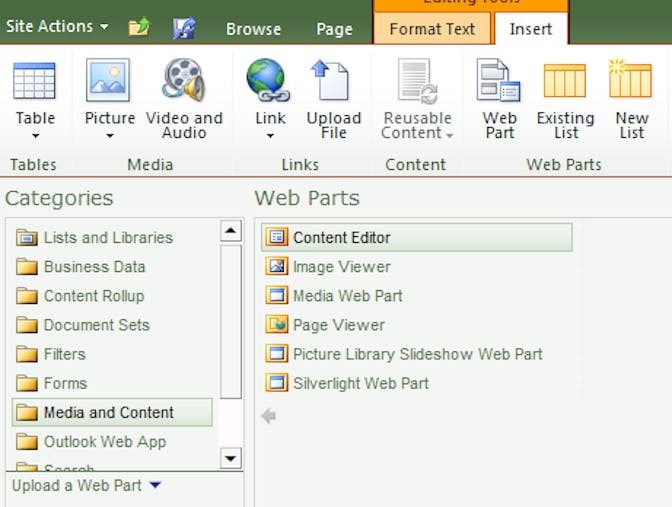
How to Run JavaScript on SharePoint Pages
Here's a cool trick to run JavaScript on SharePoint 2010 wiki pages without editing the master page.
A great way to extend SharePoint is to create what I like to call mini applications -- run JavaScript on SharePoint pages. And the best part: you don't need to edit the master page. Here's how you run JavaScript on a SharePoint 2010 wiki page:
01: Content Editor Web Part
Your JavaScript has to be loaded from a Content Editor Web Part. To add, go into page edit mode, then click Insert > Web Part > Media and Content > Content Editor. Then click Add.

Next, open the web part tools by editing the web part. There are a few different ways to load a script on your page. One way is to add a content link in your web part tools panel (if you do this, the file has to live in the current site collection). To follow my best practice of one file, one place I suggest you go about this a different way.
With the web part tools open, click inside the Content Editor Web Part (the first time this area will read Click here to add new content). With the cursor blinking inside the web part, click the Format Text Tab above the ribbon, then HTML > Edit HTML Source.

This should bring up a blank dialog box titled HTML Source.
Warning: if your dialog box is not blank, you are not editing the web part -- go back and make sure your cursor was inside the content editor when you selected Edit HTML Source.

You should load your JavaScript from this dialog box. You could drop your script file text right in this box, but following the best practice, if there is a chance you may reuse this code on another page, I would suggest instead linking a file that lives in a library in the current site collection or another.
Let's say you are using jQuery in your file and you need to load that JavaScript library as well. You would drop this code into your HTML Source dialog box:
<script src="[LINK TO JQUERY LIBRARY]" type="text/javascript"></script>
<script src="[LINK TO YOUR JS FILE]" type="text/javascript"></script>Chances are you don't want to see your Content Editor on your web page. You can hide the web part while still loading the script by opening the web part tools (editing the web part), then choosing Appearance > Chrome Type > None. Click OK.

02: Setting Up Your Page
It's more than likely if you're loading a JavaScript file on the page you are going to be working with the body of the page (as opposed to master page elements). I suggest building yourself a static div on the page to use in your script.
To do this, ensure your page is in edit mode, then click the cursor is outside the content editor web part. Choose Format Text > HTML > Edit HTML Source. This will load a dialog box with some content (you may notice a div you didn't add -- this is the content editor web part). Wherever you'd like, add your div with an associated id or class to call.
<div id="[YOUR ID]" class="[YOUR CLASS]"></div>03: Custom Styles
If you are creating custom elements with your script, you probably want to style them. Granted, elements will be styled by default, but you may need to go above and beyond that with some custom styles.
There are a few ways to accomplish this. The first is to drop your styles in the same Content Editor Web Part (or a new web part) between two style tags:
<style>
/*[YOUR CUSTOM STYLES]*/
</style>A better way to accomplish this is to use an alternative stylesheet (still doesn't require editing the master page). You do need to have publishing features turned on. Go to Site Actions (top left corner) > Site Settings > Look and Feel > Master Page. Scroll down to the Alternative CSS URL section and add the URL to a custom CSS file. Click OK.

You obviously need to have a CSS file already created and saved somewhere on your SharePoint server. Again, I suggest keeping the one file, one place practice in mind.
It's important to keep in mind a couple things. First, this stylesheet is loaded after all the default SharePoint CSS files. Therefore, you are able to change the default SharePoint styles in this CSS file. Second, without editing the master page, you are only allowed one alternative CSS per site collection. If you're using this stylesheets for many purposes, ensure you're keeping it nice and organized with comments.


